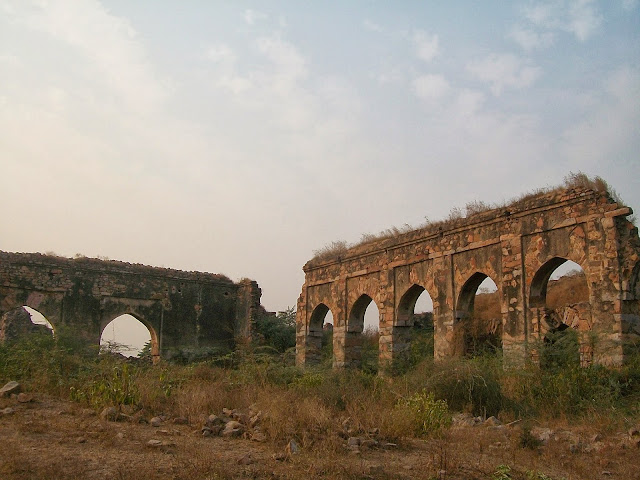This blog is a comprehensive and in-depth guide to the events, people and places throughout the history of India
Saturday, May 25, 2013
Ghiyas-ud-din Tughluq, Founder of Tughluq Dyansty
Friday, May 24, 2013
Nasir-ud-din Mahmud of Slave Dynasty
Nasir-ud-din Mahmud was only sixteen when he ascended the throne. During his twenty year rule, he remained content in surrendering the power of the state to Balban, one of his Turkish minister.
In 1249, Nasir-ud-din Mahmud married the daughter of Balban. This increased the power of Balban who was made his deputy (naib-i-mamalakat) and given the title of Ulugh Khan (premier ‘Khan’).
Balban, de facto ruler of Delhi, managed the affairs of the sate competently. Internal rebellions were suppressed. Mongol invasions were successfully repulsed. This aroused the jealousy of the other nobles. This led to his exile from 1253 to 1255. But as they created a mess of the administration, he was once again recalled by the Sultan.
Tuesday, May 21, 2013
Muhammad Shah, Third Ruler of Sayyid Dynasty
Alauddin Alam Shah, Last Ruler of Sayyid Dynasty
This pleasure loving ruler was more inefficient than his father. Such was his fondness for gratification and aversion to work that he abdicated the throne in favour of Buhlul Khan Lodi, the governor of Lahore and Sirhind, in 1451 and retired to Badaun (now in Uttar Pradesh), where he died in 1478.
Sunday, May 19, 2013
Mubarak Shah: The Second Ruler of the Sayyid Dynasty
After the death of his father Khizr Khan, the founder of the Sayyid dynasty, Mubarak Shah ascended the throne of Delhi Sultanate. Mubarak Shah, who was nominated as the successor by his father, became the sovereign ruler of Delhi on the very day of the latter's death (20th May, 1421). Unlike his father, he assumed royal title.
It was during Mubarak Shah’s reign that Yahiya bin Ahmad Sarhindi composed his Ta'rikh-i-Mubarak Shahi, dedicated to the Sayyid ruler. Like that of his father, his reign is also not marked by any important event. He suppressed the rebellions at Bhatinda and in the Doab. Khokars under Jasrat tired to pose challenge to the authority of Delhi Sultanate. Mubarak’s reign saw the ascendancy of the Hindu nobles in the court.
Mubarak Shah fell prey to a conspiracy hatched by the Delhi nobles, both Muslims and Hindus, under the leadership of the disgruntled and unscrupulous wazir Sarvar-ul-mulk, He was murdered on the 19th February, 1434, when he was on his way to monitor the construction of Mubarakabad, a newly planned city by the Sayyid ruler on the banks of the Jamuna river.
Khizr Khan (1414-1421), Founder of Sayyid Dynasty of Delhi Sultanate
According to some historians, Khizr Khan traced his descent to the Prophet. However, this view has been contested by other authorities. It seems probable that his ancestors might have belonged to Arabia.
Instead of assuming sovereign title, Khizr Khan choose to rule as viceroy of Timur's fourth son and successor, Shah Rukh. His reign of seven years was devoid of any important event. Delhi Sultanate was reduced to the extent of a small principality and Khizr Khan held sway over only a few districts adjoining the capital and his authority was challenged even in these places by the Hindu zamindars.
Khizr Khan died in 1421. He was succeeded to the throne by his son Mubarak Shah.
Khizr Khan has been described by the medieval historian Ferishta as "a just, generous and a benevolent prince". However he was not a strong ruler.
Skanda Gupta (c 454-467): the Last Great Gupta Ruler
Cosmas Indicopleustes
World map by Cosmas Indicopleustes / Image Credit: upload.wikimedia.org Cosmas Indicopleustes (literally: "who sailed to India") ...

-
Books Authors Abhigyan Shakuntalam (Recognition of Shakuntala) Kalidasa Aihole ...
-
Amir-i-Chahalgani, known variously as Turkan-i-Chahalgani and Chalisa (The Forty), was a group of 40 faithful slaves which came into existen...
-
Women occupied a very honourable position in the Viajayanagr society. Some of them were very learned and were eminent litterateurs. Monogamy...


